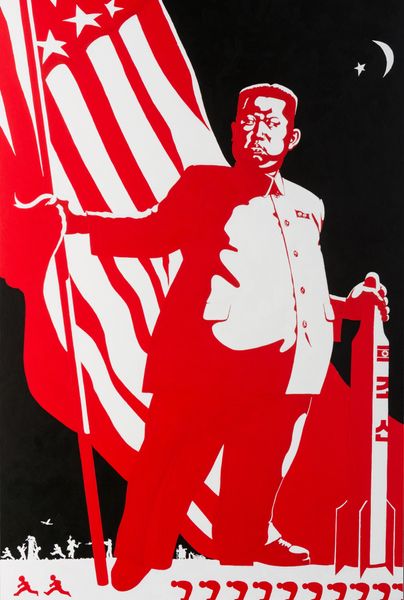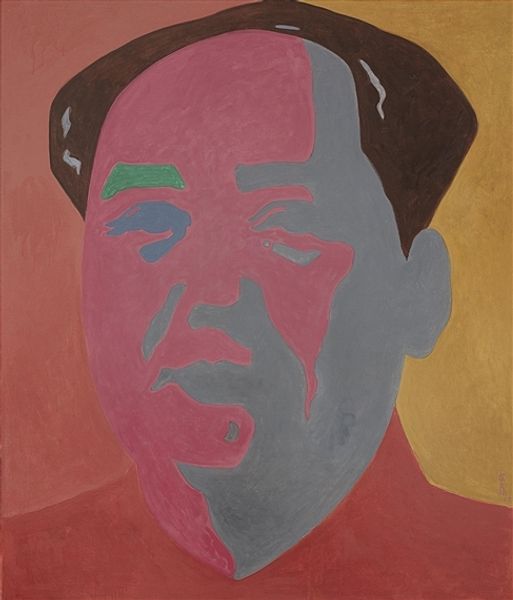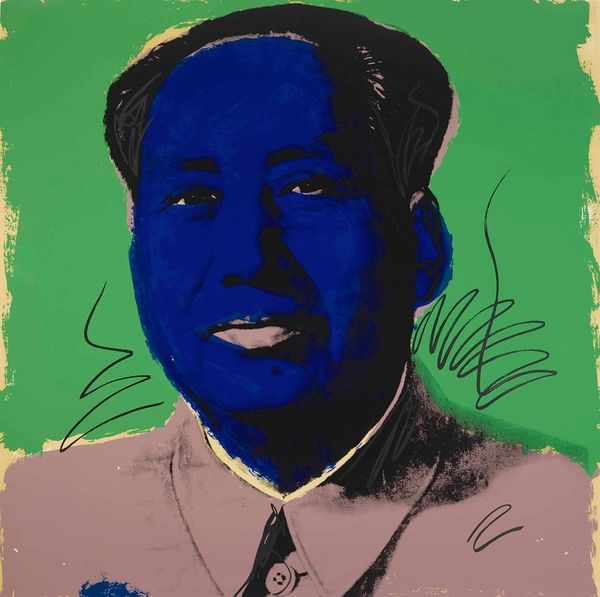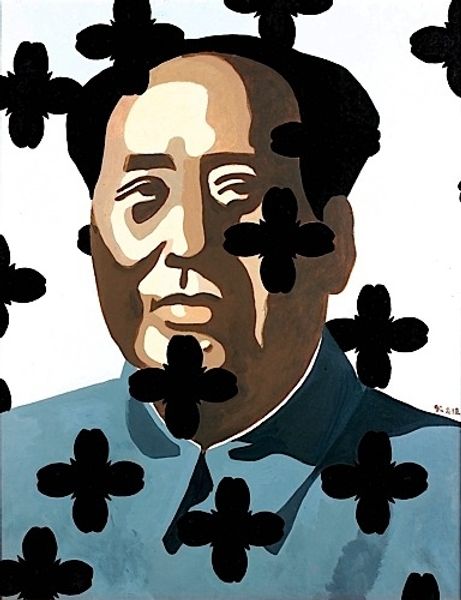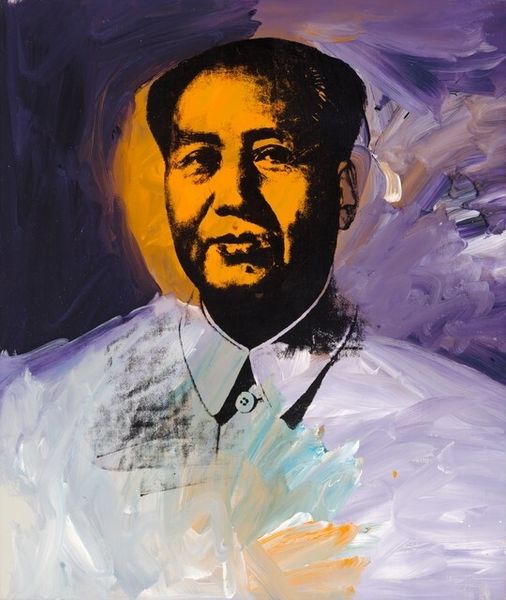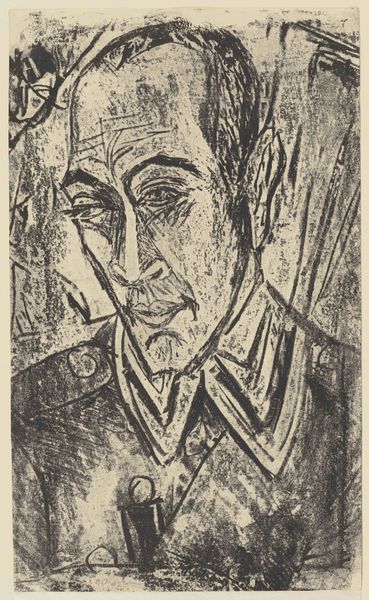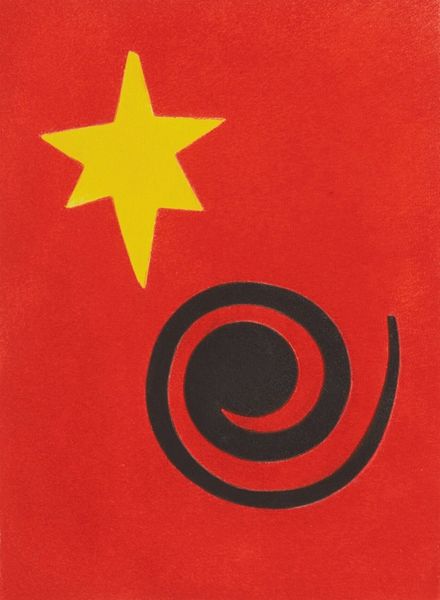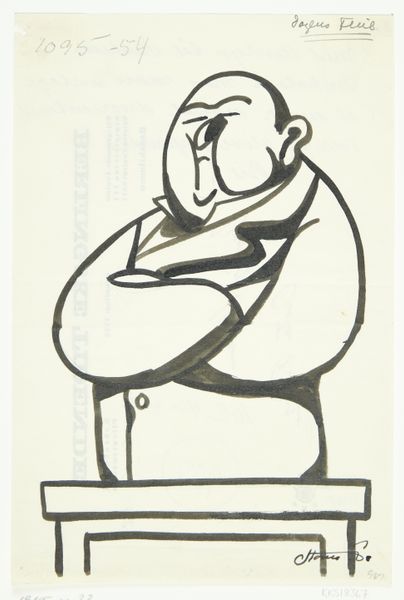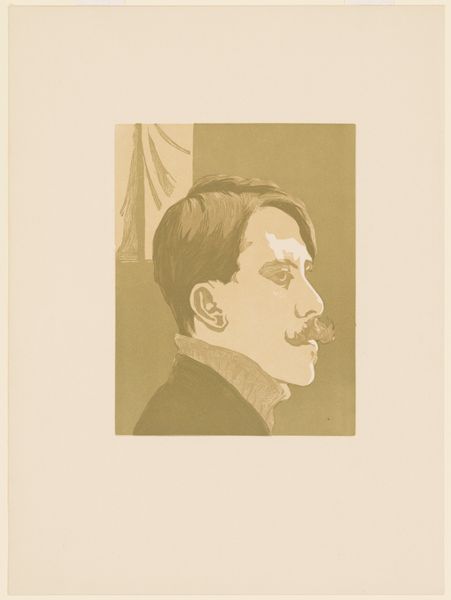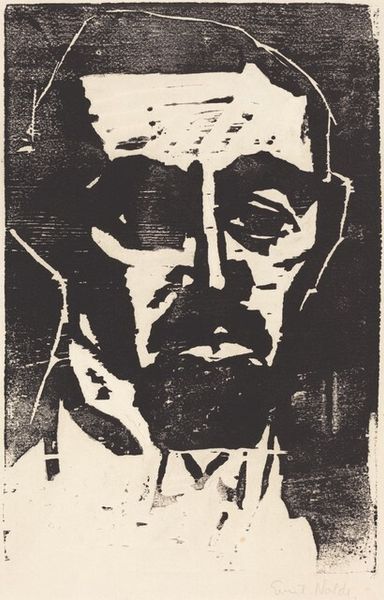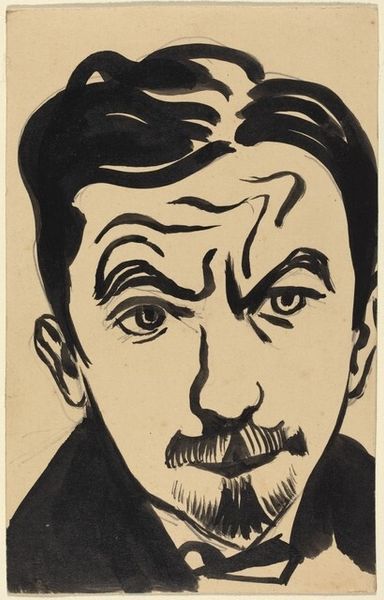
Copyright: Modern Artists: Artvee
Roy Lichtenstein made "The Adventures of Mao on the Long March" using screen printing, and it's fascinating how he simplifies such a complex historical figure. The Ben-Day dots, those little fellas, create a texture that's both flat and dynamic. You see, Lichtenstein’s not trying to trick us into thinking this is real, instead he’s reminding us it’s a picture, a representation. Look at the way the solid black areas contrast with the dotted sections, especially around Mao's face. It's like he's playing with positive and negative space, highlighting the graphic quality of the image. The thick, bold lines and limited color palette make it instantly recognizable as a Lichtenstein, but the subject matter adds another layer. It reminds me a bit of Warhol's portraits, but Lichtenstein’s got this detached, almost mechanical feel to his work, which invites you to think about how images are made and what they mean. Ultimately it embraces ambiguity, asking us to question the nature of representation itself.
Comments
No comments
Be the first to comment and join the conversation on the ultimate creative platform.

